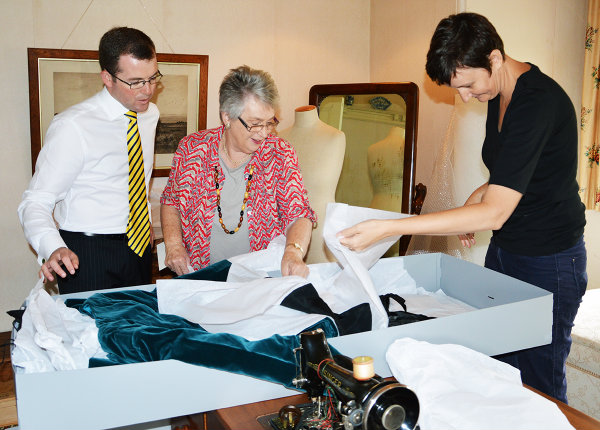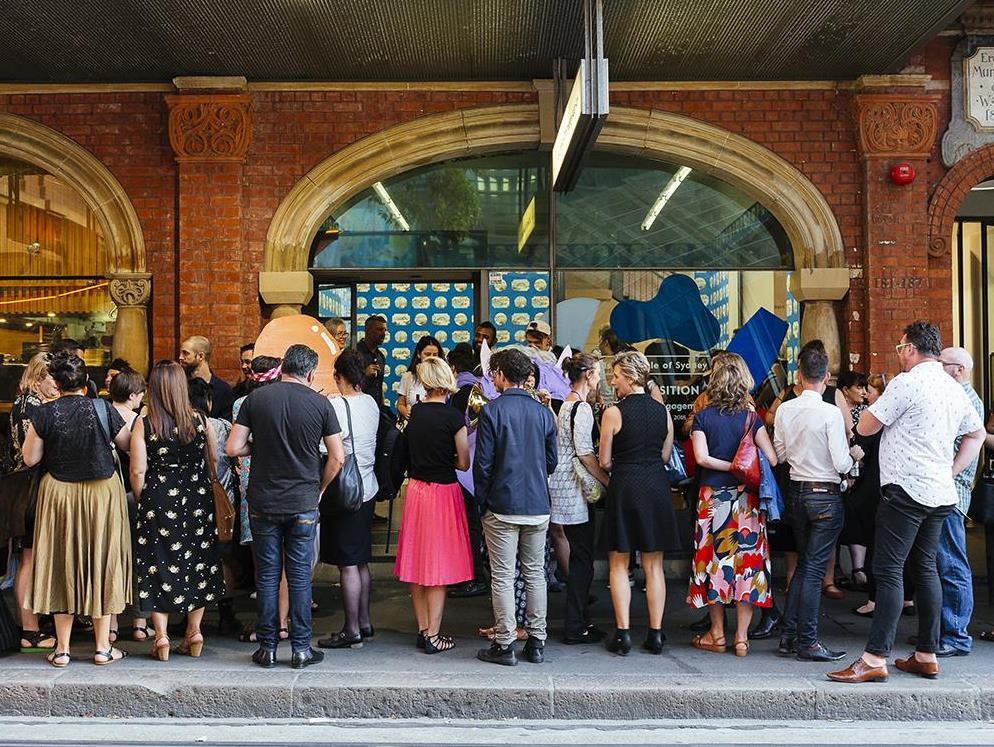Public Galleries Summit 2018 Dinner, 4A Gallery. Photo credit: Document Photography
When we talk about cultural tourism and arts-led economies, it is usually based on data generated by the top end of town, but a recent census demonstrates that in NSW, the small-to-medium sector is punching well above its weight.
Visitor numbers to NSW small to medium sized museums, galleries and Aboriginal cultural centres, totaled more than 5 ½ million in 2017, with over three million of those visitors recorded in regional areas.
The report – the work of Museums & Galleries of NSW (M&G NSW), an organisation that supports and lobbies for over 500 venues across the state, demonstrates the importance such places have for communities and local economies state-wide.
This is the third time M&G NSW has published such a report, with previous studies undertaken in 2013 and 1999.
M&G NSW CEO Michael Rolfe told ArtsHub: ‘It is something we now aim to do every five years. We want to capture that range of information, and interpret shifts over time.’
The census is akin to a sector-wide health check, providing up-to-date data on collections, staffing levels, facilities, funding and visitation. It also identifies the pressure points that could benefit from greater attention and support.
Rolfe said that while the findings weren’t largely unexpected, what the census confirmed was that since 2013 there has been real growth across NSW in awareness of the sector’s value.
‘It is healthy – the census clearly shows that – but it can always do with further injections of enthusiasm and support. Increasingly, local councils and communities understand that culture and heritage based investments make for more viable and livable communities, throughout NSW,’ Rolfe said.
Key Findings of the 2018 Census
In total, 4,069 exhibitions and 21,572 events/public programs were delivered across NSW in 2017, 73% of which took place in regional NSW. That is a staggering level of engagement and activity no doubt helped by M&G NSW’s nationally leading touring exhibition and audience engagement programs, various devolved grants, targeted support for small museums, NSW Aboriginal cultural centres and programs, and web based resources that reach worldwide.
‘We know what happens in major cultural institutions, but through this census we are firmly reminded of significant production and participation rates generated all over NSW. It is a welcome articulation of the work done by our regional galleries, museums and Aboriginal cultural centres and the support M&G NSW is able to provide,’ said Rolfe.
M&G NSW’s findings revealed:
- Organisations reported an average of 10,000 objects per collection across the sector.
- Respondents directly employ 797 equivalent full time employees.
- Over half of all organisations surveyed rely solely on volunteers.
- There were 8,629 active volunteers reported, providing a combined total of more than 5 million hours, worth over $150 million per annum*
- 96% of respondents have an online presence in some form and 88% of organisations reported using social media. This is a significant increase from the 2013 figures which indicated only 71% had on-site access to the internet, and less than half of all organisations reported having a Facebook page.
* Figure based on wage rates per hour as detailed in Unpaid Work and the Australian Economy estimates from ABS data, with increases to account for average wage since 2010
Read the full 2018 NSW Museum & Gallery Sector Census online at mgnsw.org.au

2018 IMAGinE awards at the National Art School. Photo: Tim Da Rin.
THE ROLE DATA CAN PLAY IN LOBBYING FOR CHANGE
In today’s competitive funding environment writing successful grant applications, whether targeting government, corporate or community support can be tough. Rolfe said M&G NSW’s ambition has always been to encourage the state’s small to medium sized galleries and museums to become more empowered and bolder in their public facing aspirations.
‘For them this includes knowing in great detail their identity, capacity and what their vision is to grow. The data to support those exciting propositions is now here, it is factual and easy to refer to, so advocates who want to have their arguments boosted can use this census as an effective support tool,’ said Rolfe. ‘It provides great leverage and storytelling opportunity.’
With an election looming in NSW, Rolfe added: ‘We are confident that initiatives and focus articulated by M&G NSW will be maintained.’ He continued: ‘We are of course talking to government all the time and I believe our messaging and this leverage, in support of the sector’s value proposition, are effective. We want to maintain targeted and relevant communications and this census helps us to do that too.’
THE NEEDS IDENTIFIED
The sector’s health check flagged a number of areas that would benefit from greater support.
Over 90% of museums, heritage and Aboriginal cultural organisations and just over 70% of art galleries managed a collection, with 22% of organisations identifying Aboriginal and Torres Strait Islander artefacts as part of their collection. And yet, less than half of these collections have been fully catalogued.
Rolfe said: ‘We are working at the moment with Create Infrastructure on the development of a game changing digitisation program for collections across the state. Its development is in the early stages, but we are certainly hopeful that the incoming Government will announce the roll-out of a state-wide program that will have, at its core, the documentation, digitisation and significance assessment of collection objects (and their associated stories) – and we see that as a great win for the sector.’

Object labelling and marking workshop, Saumarez Homestead, Armidale; image supplied
THE NSW SECTOR is MARCHING TOWARDS BETTER SUSTAINABILITY
‘As I said earlier, everyone is hungry to grow. The Regional Cultural Fund (RCF) has been a boon for many, but there is a now demonstrable need for increased operational and program support as well. Foremost in the minds of places and spaces we work with is the challenge of how to make traditional and non-traditional revenue streams sustainable. Create NSW’s recently published Creating New Income Toolkit is a valuable ground breaking resource – but it’s not designed to replace the legitimacy of public support for the arts’ said Rolfe.
‘While the RCF infrastructure spend is important and should continue, at some point we have to focus on the operational costs of cultural facilities to ensure they are able to perform. There is a need to be thinking about how we increase public support for programming, artists, staffing and operations. Some of this will come through the development of new revenue streams and localised philanthropic engagement, but for the small to medium sector government support remains fundamental and should increase’.
The census revealed that 38% of organisations across NSW reported an annual income over $100,000, with 22% reporting an income under $5,000. This is consistent with the trend for expenditure with 33% of organisations reporting over $100,000 and 22% under $5,000.
There is a not a lot of wriggle room here. The census also revealed that in the last five years, 52% of small to medium organisations have either applied and/or received a grant from M&G NSW.
‘That 52% reflects demand, and that demand is never fully met,’ said Rolfe.
He noted that over half of all organisations surveyed rely solely on volunteers – a contribution and support network that the census values at some $150 million per annum.
‘Volunteer run museums bring a commitment and character of their own to the collections and museums sector. That value is substantial, and whilst we always advocate for it to be resourced with new and improved skills, and paid positions we also understand the value and storytelling authentic volunteering brings to the sector.’
Rolfe said the organisation was keen to get feedback from the sector about the census data. ‘If there are figures that people want to comment on, we are always keen to be engaged and help flesh out other interpretations and findings,’ he concluded.
Download a PDF version of the 2018 NSW Museum & Gallery Sector Census by visiting mgnsw.org.au





